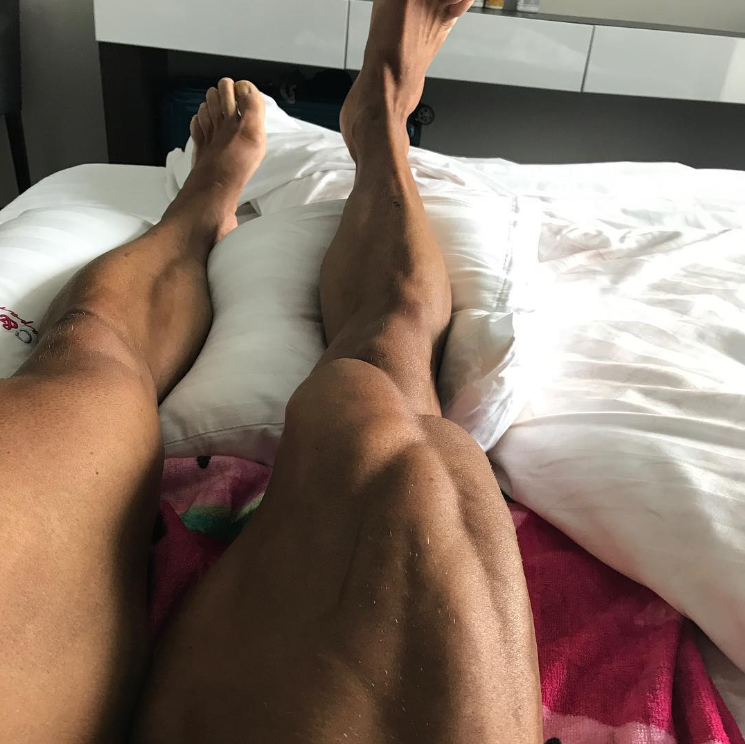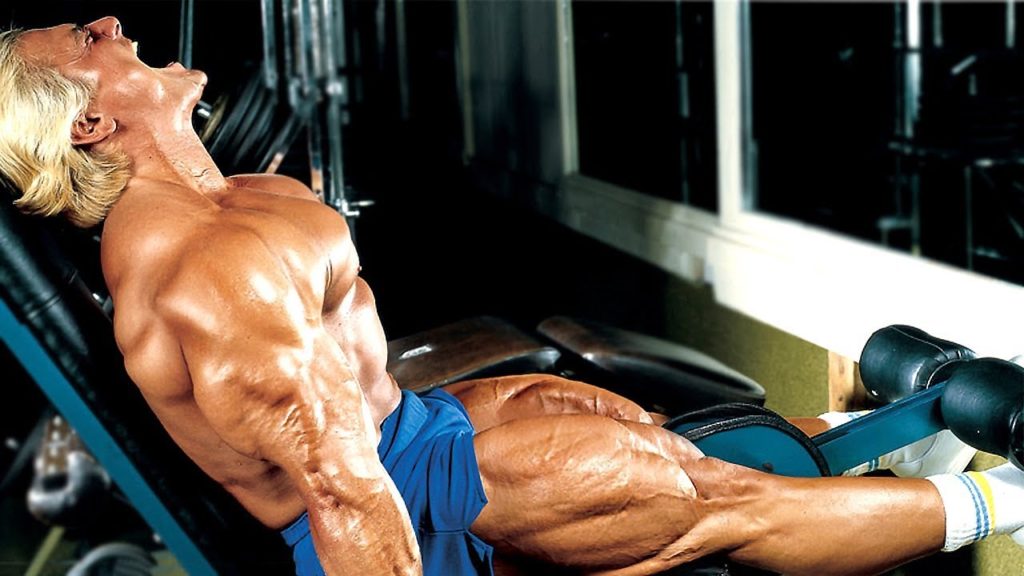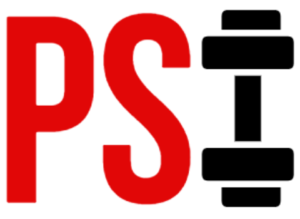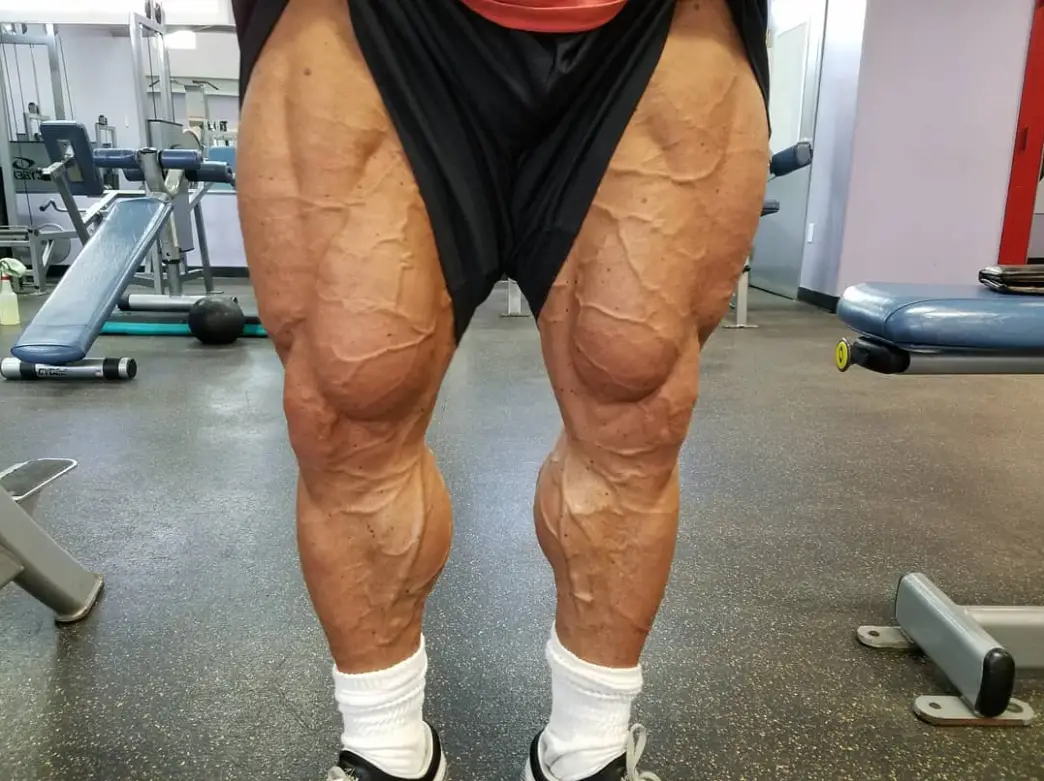While some folks prefer to ignore their legs and hide them under long shorts at the beach, we’re not about that.
If you’re reading this, there’s a good chance that you want a muscular and symmetrical physique.
And what better way to build an impressive body and attain the desired X-shape than to build a set of pronounced quads?
The only issue is, there’s quite a bit of confusion surrounding the topic, and many folks find themselves frustrated and overwhelmed on how to approach the whole thing.
On the one hand, you’ve got folks who say, “Just squat and your legs will grow.”
But on the other hand, you know that it can’t be that simple. After all, how can you ever expect to build such a complex muscle group with one exercise and with a single angle of attack?
The truth is, there is some science to the whole thing, and we’ll go over everything you need to know to build a set of impressive quads.
To build monster quads, you have to train for mass. A proper exercise routine will consider training volume, frequency, intensity, and exercise selection. Heavy compound movements such as the squat, hack squat, and front squat are the cornerstone of a proper quad training session.
The Best Quad Exercises for Mass
The bad news is, there are hundreds of leg exercises to choose from. The good news is, we’ve compiled the eight best ones in the list below.
These are ranked mainly in accordance to their effectiveness, and we’ve made practical recommendations on when to use each.
-
Barbell front squat
Oh, you expected the back squat to take first place, didn’t you? Sorry to disappoint, but according to biomechanics (and some pretty hefty anecdotal evidence), the barbell front squat is the better option for quad development (1, 2, 3).
You see, thanks to the bar position, the front squat allows for a greater range of motion at the knee, a more upright torso, and a smaller contribution from the hips. For one, this means that most folks can front squat a bit less than they can back squat (the difference is about 10 to 20 percent when you’ve learned both movements).
Second, all of this means that a lack of back strength can significantly impact your front squat performance. You can’t ‘good morning’ the weight up thanks to your hip flexors and think that you’ve got a solid squat. You need strong quads and a strong back.
All in all, the difference isn’t huge, but the front squat forces you to check your ego and work on your weak points. For many folks, this means better back and quad development in the long run.
In terms of priority, the barbell front squat can easily be your primary quad-builder.
-
High-bar back squat (to depth)
Granted, the high-bar squat is a fantastic quad-builder and shouldn’t be underestimated (4, 5). The high-bar squat allows most lifters to put a bit more weight on the bar and train their quads slightly harder.
The biggest concern is keeping technique in check as the weight gets heavy because many lifters tend to put a priority on the raw weight with little regard to their execution.
So, always progress while making sure to hit proper depth (parallel or slightly below if your anatomy allows for it) and avoid overcompensating with your hips (i.e., doing good morning squats) (5).
As far as programming goes, you can either switch between front and high-bar squats every few training cycles or train one lift on one day (say, on Monday) and the other lift on a second day (say, on Thursday).
-
Goblet squats
The goblet squat is among the most beginner-friendly and useful squat variations you can do to add mass to your quads. Not only that, but goblet squats are also equipment-efficient (you don’t need anything other than a dumbbell), and the movement pattern resembles that of the barbell front squat a lot.
And being similar to the front squat, you can expect many of the same benefits in terms of the upper back, core, and quad development (6, 7).
The only issue with goblet squats is progressive overload. There will eventually come the point where even the heaviest dumbbells at your gym might be too light for you. Because of that, the goblet squat isn’t really suited as a primary-quad builder, but you can certainly use it as a secondary exercise.
-
Leg press
The leg press is a bit of a gray area because it’s done on a machine, but it can still be used as a primary quad-builder – two things which are typically incompatible for most exercises.
Yes, the leg press is an excellent quad builder as it offers an excellent range of motion at the knees, stability, and an incredible overloading potential (8, 9). Plus, the leg press is a worthwhile option for folks with lower back issues or those who can’t squat safely due to anatomical problems or a lack of proper mobility.
So, you can use it as your bread and butter for quad development, or as a second or third exercise in your leg routine.
-
Forward lunges and Bulgarian split squats
I’m putting both exercises under #5 because both are quite similar with regards to quad activation, execution, and range of motion.
Plus, being unilateral movements, they allow us to train each quad independently and prevent side-to-side imbalances and asymmetries in the long run (10, 11). What’s more, both exercises also train your hamstrings to a significant degree, thanks to the angle of attack (12, 13).
If we had to compare the two exercises, the Bulgarian split squat would probably come ahead in terms of quad activation and development (but only slightly) as it offers a somewhat better stretch of the quad at the bottom portion of the movement (14).
You don’t know what pain is until you’ve completed five high-repetition sets on either of these exercises.
As secondary quad exercises, you can incorporate either into your routine, and it wouldn’t be a bad idea to alternate between the two every few months to prevent staleness.
-
Hack squats
Similar to the leg press, the hack squat is another amazing quad-builder that, in some instances, can also work as a primary exercise for that muscle group.
Thanks to the unique design of the hack squat machine, this exercise offers lifters the ability to put their quads through a great range of motion and hit every fiber during a challenging set.
What’s more, the hack squat can also be overloaded significantly, so you don’t need to worry about it becoming too easy for you.
For most lifters, the hack squat will work as a secondary, so alternating between it and the leg press every so often is a great way to make long-term progress and keep things interesting.
-
Leg extensions
Each of the above exercises is excellent in its unique way, but all of them have one thing in common:
They are all compound exercises. To train your quads, you also need to involve other muscle groups.
The leg extension is by no means a primary quad-builder, but it offers the unique benefit of truly isolating your quads without causing fatigue to other muscle groups like your back, hamstrings, or glutes. The movement trains your quads quite effectively, as research has shown a pretty decent EMG activation (15). Plus, the potential for overload is pretty decent, since you can both increase the resistance and pile on more repetitions as your quads get bigger.
In terms of exercise priority, the leg extension should mostly be done as the last exercise for extra volume because the technique won’t be a big issue with it once fatigue has set in.
Hey, But What About The Smith Machine?
If you’ve read through the above list of exercises, you probably noticed that none of them are done on the smith machine, so allow me to elaborate.
You see, I mostly don’t recommend the smith machine for leg training because of two reasons:
1) Most good leg exercises can’t even be done on a smith machine.
2) Those exercises that can be adapted to the smith machine mostly suffer for it.
Take, for example, the loaded back squat. I never recommend lifters do their squats on the smith machine because of the fixed bar path. We are all slightly different, and thus, no two squatting techniques are going to look the same. But doing them on a smith machine forces you to ‘configure’ your body to a predetermined bar path. For such a compound movement, that might bring serious issues, pains, and even injuries.
Plus, research has shown that free weights tend to activate and develop our muscles better (especially when it comes to the smith machine versus a free bar) (16, 17, 18). That’s also something to keep in mind when putting together training programs for yourself or a client.
Below is John Meadows and Jay Cutler on John Meadows Instagram. These are 2 of the greatest minds in quad development together in one photo! BTW, those are John Meadows quads in the featured image on this post.
How to Build a Leg Routine: 6 Rules You Need to Follow
There are many reasons for training, so your training goals will primarily influence the below rules. But since we aim to answer the question of how to build quads, here’s what you need to keep in mind:
Rule #1: Adequate training volume.
Training volume refers to the amount of work you do within a given workout or training cycle. There are many ways to track it, but perhaps the simplest and most efficient one is by counting the number of sets you do (19).
Research has found a tight correlation between training volume and muscle growth. More work tends to build more muscle – to a point (20). Eventually, you reach past productive work and go into overtraining territory where more sets don’t help further but instead only increase fatigue and slow down progress (21).
It’s also worth pointing out that doing too little leads to slow or non-existent progress. So, it’s crucial to find that sweet spot between not enough and too much if you want to optimize muscle growth.
The consensus is that we should do at least eight sets for our quads every week. According to Mike Israetel, Ph.D. – one of the brightest minds in the fitness industry today – the range between minimum effective volume and maximum adaptive volume for the quads is 12 to 18 sets per week (22).
I recommend starting conservatively and slowly adding work over the weeks, so long as you’re recovering well between workouts.
It’s also important to remember that you should split that volume of work across several exercises. We’ll cover that in rule #4.
Rule #2: A proper use of different loading ranges (training intensity).
Training intensity refers to the amount of weight you’re lifting relative to your absolute max. So, for example, if your max squat is 225 pounds for a single, a set with 205 pounds would be about 90 percent of your max. A set with 155 pounds would be about 70 percent of it.
According to research (and some strong anecdotal evidence), we should do most of our sets between 60 and 75 percent of our one repetition max for muscle growth – generally between 6 and 15 repetitions (23). So, in our squatting example, that would be between 135 pounds (60 percent) and 170 pounds (75 percent).
This is because each loading range offers unique benefits, and, together, bring about greater muscle growth. For example, heavier sets (75 percent and up) tend to be better for strength, where lighter sets (70 percent and below) allow us to do more repetitions, cause more stress to our muscles, and force them to grow (23).
Plus, it’s important to include some higher-repetition work for the sake of building training volume because doing 16 heavy sets of squats each week, I’m sure you can agree, is a great way to overtrain and injure yourself.
We’ll go over practical ways to apply this rule below.
Rule #3: A productive training frequency.
I know that I’m opening a can of worms with this one, as there are many opinions on the topic of frequency.
On the one hand, you’ve got folks who swear by a low-frequency approach (say, training your legs once per week). On the other hand, some people believe that more = better. So you’ve got recommendations ranging from as little as once per week to as much as seven or more times per week (as is the case with the high-frequency Bulgarian style of training).
In one systematic review and meta-analysis from 2018, however, researchers looked at a total of 22 studies and concluded that, so long as training volume is equated, a higher training frequency doesn’t lead to superior muscle or strength gains (24).
Researchers also point out that past studies might have found a correlation between a higher frequency and more gains primarily because of an increased training volume (which makes sense).
With that said, it’s worth paying attention to your training frequency and possibly train your quads more than once per week because of one thing – volume allocation (how you spread out your volume throughout a training week).
For example, if you plan on doing 14 working sets for your quads per week, doing all of that work in a single session will likely leave you feeling exhausted by the end. You’ll also have to use lighter weights for the second half of the workout due to the accumulated fatigue (which itself means a smaller training stimulus due to the accrued muscle damage) (25).
But if you instead spread these 14 sets across two or three sessions, you would be able to do all of your weekly sets in a recovered state, not build as much fatigue in any given workout (and also prevent your technique from breaking down), and possibly use more weight across the board (i.e., a more significant stimulus for growth).
We’ll go over the practical side of this below.
Related: If you want to learn more about training frequency, read this other article on Pump Some Iron.

Rule #4: Exercise selection and priority.
No matter how often you choose to train your quads within the week, you should structure each session by following the same rules.
Start each workout with a primary movement (e.g., squats, leg press, etc.), and, depending on how many exercises you plan on doing that day, move down the list. This is because compound exercises like the squat allow you to use heavier weights and cause a more significant growth stimulus to your muscles. So it’s ideal to perform those at the start of your workout, while you’re still fresh.
You can then complement your workouts with less complicated exercises like leg extensions, but your focus should always be around compound exercises. So, why is that, you ask? Rule #5:
Rule #5: Progressive tension overload.
The principle of progressive overload roughly states that, for the body to keep adapting over time (e.g., increase muscle mass), we need to put it under greater stressors gradually (26). Meaning, we need to keep challenging ourselves on an ongoing basis. One of the best-known examples of the progressive overload principle is to gradually lift heavier weights while keeping other things constant (e.g., number of sets and reps you do).
So, for example, if you managed to squat 275 pounds for five sets of 5 last year and now you can squat 315 pounds for 5×5, that’s a form of progressive overload, and your quads are probably bigger now.
This is why it’s essential to base your training around compound exercises, which offer а greater potential for overload. It’s much easier to progress on a multi-joint exercise like the squat or leg press than it is to do that on the leg extension machine.
Rule #6: Intensity of effort.
Training to failure can be implemented on most muscle groups. Quad training is a little different. One can’t exactly reach true failure on an exercise like the squat without risking injury.
We all know that putting enough effort into our training is imperative – you can’t cruise comfortably through your workouts and still make good progress. You need to push yourself. But too much can also be bad because training to failure builds too much systematic fatigue and impacts your subsequent sets and workouts of the week (27).
To make the most of your training and prevent injury, you should do the majority of your quad sets near failure, but always leave one to three repetitions in the tank (29). Remember: progressive overload matters more for long-term progress than destroying yourself on a single set.

Example Quad Routine:
Here’s how everything we covered today might flesh out into a practical quad program:
Monday (Workout 1) – 8 working sets
High-bar back squats – 4 sets, 6-8 reps, 2-3 minutes of rest in-between
Forward lunges – 4 sets, 8-12 reps, 1.5-2 minutes of rest in-between
Thursday (Workout 2) – 8 working sets
Barbell front squats – 3 sets, 6-10 reps, 2-3 minutes of rest in-between
Forward lunges – 3 sets, 8-12 reps, 1.5-2 minutes of rest in-between
Leg extensions – 2 sets, 12-15 reps, 1-1.5 minutes of rest in-between
Check out this related video from John Meadows:
The Bottom Line
There are hundreds if not thousands of ways to organize your weekly training and still achieve great results.
But, so long as you follow the above rules and recommendations, you can organize your quad training so it fits your preferences and schedule.
Also, there are dozens of quad exercises out there, but the above eight have proven themselves over and over again. You can pick two to four of them, use them for a couple of training cycles, and then switch them for other movements from the list.
That way, you’ll avoid training staleness and provide somewhat of a novel stimulus to your muscles on an ongoing basis.
Thank you for reading. If you liked this article, please comment and share! Now, go Pump Some Iron!
Follow me / Pump Some Iron on Instagram for updates @pump.some.iron

